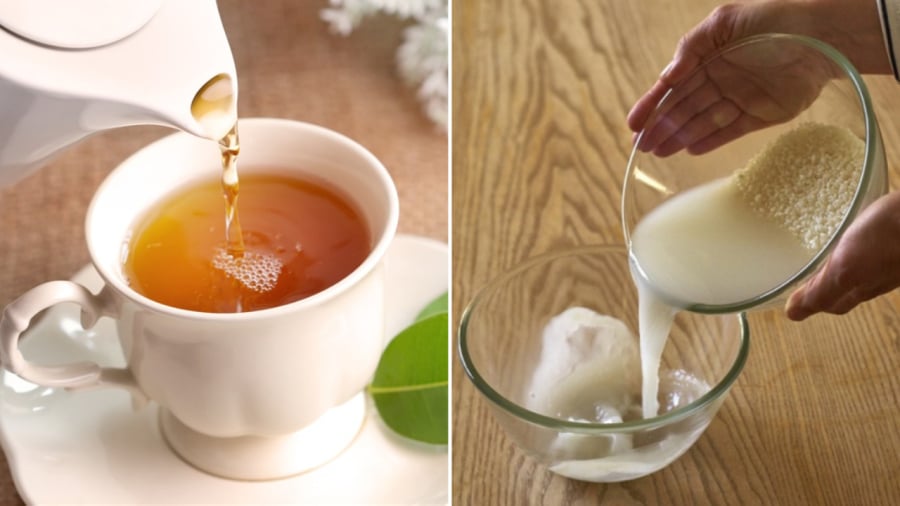Leftover Tea
Tea is a familiar beverage to many. Usually, tea is brewed and consumed within the day. Leftover tea from the previous night is no longer suitable for drinking but can be used to water plants.
Tea contains polyphenols, which have antioxidant and antibacterial properties. By watering your plants with tea, you can promote their growth, prevent root rot, and make them stronger.
Fermented tea can also alter the structure of the soil, making it more porous and nutrient-rich, which is beneficial for root development.
Before watering your plants, dilute the tea with clean water at a ratio of 1:10. Watering your plants with tea two to three times a week will show positive results.

Leftover tea and rice water are great options for watering plants.
Rice Water
Rice water is commonly used to water plants and flowers, but not everyone knows the correct way to use it.
Rice water contains nitrogen, phosphorus, and potassium, which are beneficial for plants. Instead of pouring rice water directly onto the roots, it’s better to ferment it to create a multi-nutrient-rich organic fertilizer.
To ferment rice water, you can add orange, tangerine, grapefruit, banana peels, or the peels of other fruits and vegetables to increase its nutritional value. Place all the ingredients in a container, close the lid tightly, and let it ferment for about 3-5 months. Once the mixture has fermented, strain the liquid, dilute it with clean water, and pour it onto the soil around the base of the plant.
Fermented Soybean Water
Soybeans are highly nutritious and beneficial to human health. Additionally, they can be used as fertilizer for plants. Soybean cake (the solid part of soybeans left after oil extraction) is also used by many as plant fertilizer.
You can also make fertilizer from soybeans to provide extra nutrition to your plants. By utilizing the soybean residue obtained during the process of making soy milk or tofu at home, you can create an economical and beneficial plant fertilizer.
Simply put the soybean residue in a container, add water, close the lid, and let it ferment for about a month. Before use, dilute the fermented soybean water with clean water to avoid damaging the roots of your plants.

Fermented soybean water and fruit peel water provide plants with essential nutrients without harmful chemicals.
Fruit Peel Water
Fruit peels make excellent fertilizer for plants. After eating a fruit, retain the peel, cut it into small pieces, and place them in a container with a lid. Add two spoons of brown sugar and fill the container with water (not to the brim). Close the lid but not too tightly, as the gas produced during fermentation needs to escape. The fermentation time will vary depending on the environmental temperature; the higher the temperature, the faster the fermentation process.
Once the fruit peel water has fermented, dilute it with clean water at a ratio of 1:1 and use it to water your plants.
This type of water provides vitamins and minerals that improve soil structure, promote root development, enhance the plant’s immunity, and increase flower production.



































